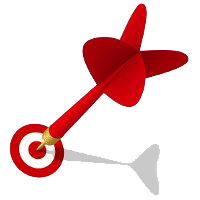22 Ways to Find Advertisers For Your Website
- 6-12-2011
- Categorized in: Marketing
 Selling advertising deals is one of the most profitable ways to monetize your website. Some time ago I wrote an article titled How to Find Advertisers for Your Website, where I covered the pros and cons of using this method, what you need to have in place before getting started, how much you should charge and so on.
Selling advertising deals is one of the most profitable ways to monetize your website. Some time ago I wrote an article titled How to Find Advertisers for Your Website, where I covered the pros and cons of using this method, what you need to have in place before getting started, how much you should charge and so on.
The most difficult part of the process, however, is to actually find the advertisers. I included some places where you can look for in that article, but I felt that it would be useful to have one post listing all the ways you can use to find advertisers for your website. That is what the list below is all about.
Leveraging Your Own Site
Your own website should be the first port when it comes to finding advertisers. Why? Because people who are familiar with your work will be more willing to discuss possible advertising deals.
1. Put an “Advertise” link on the menu bar
If you have a navigation menu bar, you could include an “Advertise” link there, making it point to a page where you describe the advertising options of your site. This link will help you in two different ways. First of all it will allow interested companies to quickly find the page where you display your advertising information. Secondly, it will also let all visitors know that you do accept advertising deals.
2. Use an “Advertise Here” banner as placeholder
If you have unsold ad spots, you could include an “Advertise Here” banner as a placeholder on one of them. This banner will act just like the “Advertise” link on the navigation menu, but it might be more effective because it will show potential advertisers exactly where their ads will be displayed. Just make sure to not use an “Advertise Here” placeholder on all of your unsold spots, as this would send a negative message to advertisers (i.e., no one is buying any ads on your site, so why should they?).
3. Write a post welcoming advertisers
If you have a blog, you could write a post inviting advertisers. This technique works pretty well because it allows you to elaborate your offer. On the post you’ll be able to explain what kind of audience your blog has, what kind of traffic it gets, what are the advertising options available and so on.
4. Email your list
Do you have an email list? Then send the same information that you posted on the blog to these subscribers. The only thing you should not include is the price. Why? Because if you don’t include it interested people will email you asking for that, and this will give you their email addresses and an invite for a conversation, where you’ll have better chances of convincing them.
5. Put a message at the bottom of blog posts
If you post often on your blog you could attach a message at the bottom of every post. Something like “Want to showcase your product to our audience? Then check our advertising options.” Obviously you should include a link to your “Advertise” page on that message.
6. Put a message at the bottom of your feed
Similarly, you could also put a message at the bottom of your feed. This will make sure that both website visitors and RSS subscribers will see it.
7. Examine who is leaving comments
It is a good idea to examine who is leaving comments on your blog. You are basically looking for people who work at companies that have relevant products to your audience. Once you identify someone who does (either by the link he will leave or by the domain on his email address), you’ll just need to contact him, asking if his company would be interested in becoming a sponsor. This technique works well because the person will already be a member of your community.
8. Examine who is linking to you
Apart from examining who is leaving comments on your blog you should also check the people linking to your blog posts. If you notice a link from a company blog, you could again contact the company asking if it would be interested in becoming a sponsor. If they liked your content enough to link to it, they will certainly consider an advertising deal.
9. Reply to all press releases and review requests
Once your website gets somewhat popular inside its niche you’ll certainly start receiving many press releases and review requests via the contact form. Instead of sending these to the trash bin, you should reply to all of them, stating that you found their product/service interesting, and that you believe they could benefit from advertising on your site because your audience would be a good match. Then give all the details about the advertising options, and wait to see if they are interested.
Exploring Ad Networks
If you can find companies that are already spending money on online advertising, your job will be halfway done. Advertising networks represent an excellent opportunity to do this.
10. BuySellAds.com
Just by visiting the homepage of this ad network you’ll be able to see a list of “Sample Advertisers.” Most of those are big online spenders. After that you can also check the publishers listed on the directory. Just click to visit the homepage of each site, and check what companies bought banners there. You’ll be able to find hundreds of potential sponsors.
11. AdBrite
On the navigation menu of this ad network you’ll find a link titled “Site Directory.” It is basically a list of all the websites that accept ads through the network. You’ll just need to browse through them, checking what companies are buying banners there. The interesting thing is that you can also filter the websites by niche, making sure you’ll only contact relevant companies.
12. ClickBank
ClickBank is not an ad network per se, but rather an affiliate marketing one. That being said, you could still signup as an affiliate and browse its marketplace looking for sponsors. Just avoid contacting the top selling products, because those already have hundreds of affiliate promoting them. Focus on the middle range of the marketplace.
Once you signup as a “Blogger” on this ad network you’ll be able to browse its marketplace, which contains a list of companies who are willing to pay bloggers to review their products/services. Guess what? After that it will just be a matter of contacting them.
14. ReviewMe
This network works pretty much like the previous one. You’ll find fewer offers here, but it is still worth a look once in a while. Additionally, if you setup a low review price for your blog you’ll be contacted by interested companies on a regular basis.
Vising other sites in your niche
A very effective way to find advertisers for your website is to visit other sites in your niche, looking for companies advertising there already.
15. Contact the banner advertisers
First of all you’ll want to contact the advertisers who purchased banner spots. Usually these are companies who contacted the site owner directly, so they will be more open to discussing new advertising opportunities with you.
16. Contact the AdSense advertisers
If the site you are visiting uses Google AdSense, you could check the companies that are putting ads there and then contact them . Mention on your email that your saw the company ad on the XYZ site, and that you believe your site would be a good match for their products/services, too.
17. Contact the site owner
If your website is larger than the one you are visiting, you could also contact the site owner to see if he is not interested in purchasing one of your banner spots. This could help him to get more brand awareness and new readers. Secondly, you could also try to establish a partnership, where you refer advertisers to each other.
Using Google
Whenever you need to find something online, Google can help.
18. Search for relevant products and contact the organic results
Companies that sell products or services relevant to your audience will certainly consider the opportunity to advertise on your site. If that is the case, all you need to do is visit Google and start searching for these companies. If you have a site about baseball, for example, go to Google and search for “baseball bats”, “baseball gloves” and so on.
19. Search for relevant keywords and contact the AdWords advertisers
Apart from finding companies on the organic results you can also look for the ones already spending money on Google AdWords. These are the “Sponsored Links” that will appear on top and to the right of the organic search results. Notice that you don’t need to search for products here. Searching any keyword that is related to your niche should already trigger the sponsored links.
20. Search for websites thanking their sponsors/advertisers
Many websites publish periodic posts thanking their sponsors. You could use Google to find these posts, as they will come with a list of companies you can contact. For example, you could search for “thanks sponsors” on Google. Alternatively you can also filter the search to specific websites that are related to your site. If you have a tech blog, for example, you could search for “site:techcrunch.com sponsors”, which will give you a list of all the posts on TechCrunch.com that talk about sponsors.
Using Social Networks
Social networks are among the most popular websites on the Internet these days. As such, companies are starting to direct their advertising efforts there, and you could use that to find sponsors for your site.
21. Sponsored Tweets
Twitter created one of the fastest growing online platforms, and many companies started to leverage the “sponsored tweet” idea. They basically pay a certain amount of money for people willing to send a message talking about their products or services. Most of these companies require people to disclose the ads with hashtags. Two popular ones are #ad and #sponsored. If you search for those hashtags on Twitter, you’ll be able to find a huge list of sponsored messages. After that you’ll just need to contact the companies who sponsored them.
22. Facebook Ads
Facebook is the largest social network on the web, and they also have a self-serving ad platform that works similar to Google AdSense. As a result many companies are purchasing ads there, and you could try to find some that are related to your own niche. You just need to browse around the site (while logged in), and the ads should appear on the right sidebar. On some pages you’ll also find a link titled “More Ads,” which will send you to a page with a list of advertisers relevant to your profile.
Bonus Tip
This tip helped me find dozens of advertisers over the years. It is a really simple but very effective one. The tip is: create a folder on the bookmarks of your browser named “Potential Advertisers” or “Potential Sponsors.” After that you’ll just need to pay attention while browsing the web to companies and/or websites that have something related to your website and that could be interested in advertising there. Whenever you come across one, bookmark it. If you use the Internet a lot you’ll find that this bookmark folder will grow very quickly, and it will just be a matter of getting in touch with the companies listed there.



